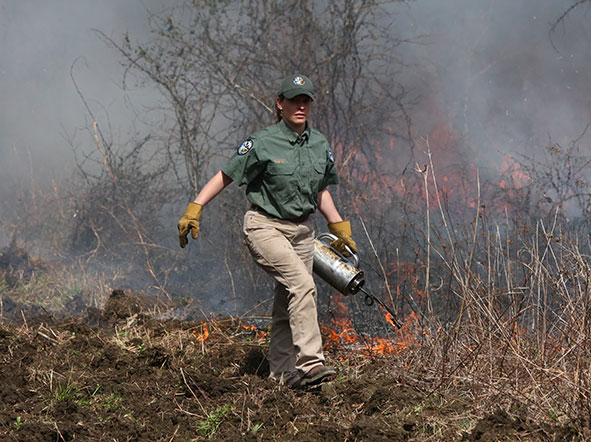Diseases & Parasites
White-tailed deer are susceptible to several diseases and are hosts to numerous parasites. Deer tolerate most of these diseases and parasites well, and in most populations, disease-related mortality is limited.
A major exception is hemorrhagic disease caused by the epizootic hemorrhagic disease (EHD) or bluetongue virus. Some mortality from this disease occurs in the South every year and outbreaks have expanded north in recent years. There are several serotypes or varieties of this virus and mortality rates generally increase in all regions when a variety recirculates or a new one arrives. Mortality rates typically are less than 15 percent in the South, where deer have been exposed for decades. Higher rates occur in deer with northern lineages because they haven't adapted to the virus long-term and lack regular and recent previous exposure. In a MSU Deer Lab study, deer with northern origins were 2-3 times more susceptible to EHD than deer of southern origin (Jacobson and Lukefahr 1998). This virus has been causing particularly significant outbreaks recently in the central U.S. For example, Michigan DNR reported record mortality during summer 2012.
Epizootic hemorrhagic disease typically hits in late summer and fall and coincides with peak populations of biting midges that serve as the vector. This disease is the prime suspect when dead or dying deer are found around water holes in late summer or fall.
Hoof sloughing in harvested deer is evidence of an animal that survived the disease; the good news - the meat from such animals is safe for human consumption.
Over 100 species of internal or external parasites, including protozoans, flukes, nematodes, tapeworms, and arthropods, have been reported from white-tailed deer. Highest parasite diversity occurs in the southeastern states. Heavier parasite loads commonly are associated with nutritionally stressed herds regardless of whether the stress results from inherently poor-quality habitat or habitat degraded by over-browsing.
The internal nematodes and the external arthropods tend to be the most important groups of parasites. The large stomach worm and the large lungworm are the two most pathogenic helminthes, in the Southeast. The large lungworm is prevalent across the southeastern United States, with young deer most susceptible, especially in over-populated herds. The liver fluke is another parasite of importance in this region.
Parasitic arthropods include ticks, bot flies, lice, and deer keds. Tick infestation is rarely a major cause of mortality in adult deer, although significant fawn mortality has been attributed to tick infestations in some areas.
The black-legged tick or deer tick is a vector of the agents of Lyme disease in humans, which initially produces a distinct rash at the bite site.
Bot flies may be found exiting their home in the back of a deer's mouth and nasal cavities as a carcass cools.

The combined blood loss from heavy tick and biting fly (mosquitoes and horse flies) infestations can be a problem for adult deer during summer. Other external arthropods are seldom of significant health consequences to whitetails.
Viral fibromas are sometimes seen on bucks and does, and get larger with age.

These are similar to warts on humans and do not harm the animal unless they get large enough to affect sight or eating activity. Some extreme cases may also smell bad due to secondary bacterial infections and human consumption of these cases might not be advised.


Epizootic Hemorrhagic Disease
This disease is the prime suspect when dead or dying deer are found around water holes in late summer or fall.

Hoof Sloughing in Harvested Deer
Hoof sloughing in harvested deer is evidence of an animal that survived the disease.

Deer Parasites
Over 100 species of internal or external parasites, including protozoans, flukes, nematodes, tapeworms, and arthropods, have been reported from white-tailed deer.

Parasitic Arthropods
Parasitic arthropods include ticks, bot flies, lice, and deer keds.

Lyme Disease
The black-legged tick or deer tick is a vector of the agents of Lyme disease in humans, which initially produces a distinct rash at the bite site.



